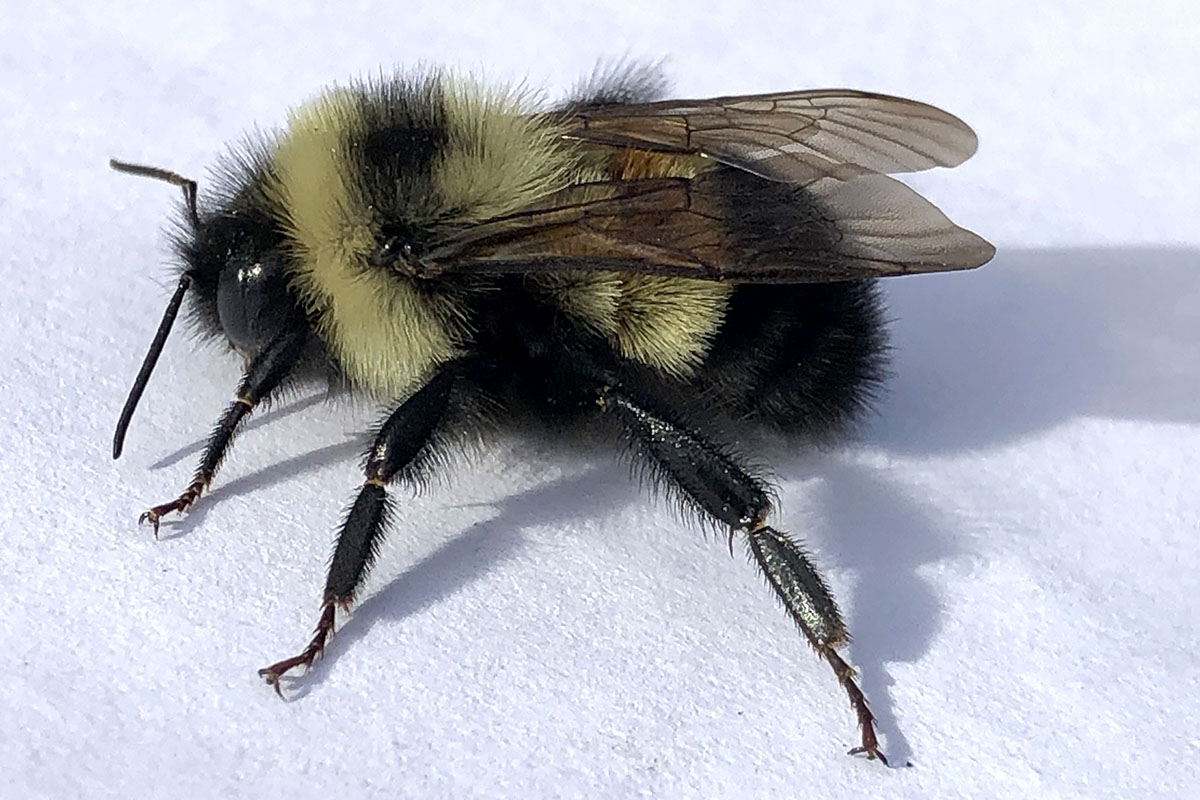Rusty Patched Bumble Bee
The “Bombus affinis,” more typically known as the rusty patched bumble bee, is an earnest pollinator native to North America. The rustic patch that is visible on the males’ abdomens is the story behind its name.
The rusty patched bumble bee typically builds its nest underground, seen mostly in former rodent burrows. However, this species is now on the verge of extinction and tagged as critically endangered on a global scale.
Since 2009, rusty patched bumble bees have not been observed throughout the country.
Hungerford’s Crawling Water Beetle
Recognized scientifically as “Brychius hungerfordi,” Hungerford’s crawling water beetle is now a critically endangered species. This beetle is a part of the Haliplidae, a family of water beetles.
Although these beetles live in an aquatic habitat, they might appear as though they are capable of swimming. However, they instead prefer to crawl when traversing as much as possible. Such a peculiar characteristic is where the species derived its name.
Hungerford’s crawling water beetles are known to reside specifically in coldwater streams.
Taylor’s Checkerspot
Agriculture and other modern developments have put the condition of Canadian grasslands in peril, therefore greatly affecting the long-term survival of Taylor’s checkerspot.
Taylor’s checkerspot is named after the checkered color pattern visible on its wings, consisting primarily of black, orange, and white tints. This butterfly species, otherwise known as “Euphydryas editha taylori” or the Whulge checkerspot, is endemic to Vancouver Island.
At the moment, Taylor’s checkerspot butterflies are extremely at risk of becoming extinct. They are highly regarded as keystone species due to their sensitivity to alterations in their natural surroundings.

